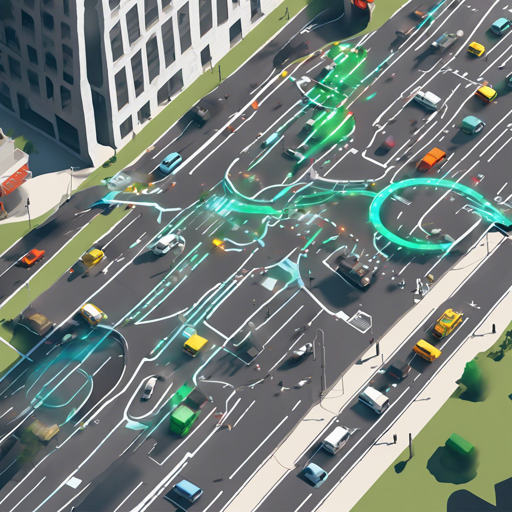Welcome to the future of smart traffic management! In this article, we’ll walk you through the steps of setting up the Multi-Commander project, which leverages multi-single agent reinforcement learning algorithms to control traffic signals. This project was initially developed during Deecamp 2019 in collaboration with APEX Lib of Shanghai Jiaotong University and Tianrang Intelligence Company. Let’s dive in!
Getting Started with the Multi-Commander Project
The Multi-Commander framework offers a comprehensive solution by implementing various reinforcement learning algorithms. Here’s how to get started:
1. Docker Image Setup
The Multi-Commander project comes with a complete Docker image that allows you to start working quickly. Here’s what you need:
- Environment: Ubuntu 16.04
- Python Version: 3.6
- Dependencies: Cityflow, TensorFlow 1.14.0, Ray, Gym
To get the Docker image, run this command:
docker pull 957001934road-commander2. Install Required Dependencies
If you prefer to build the environment from scratch, follow these steps:
CityFlow Installation
CityFlow is a multi-agent reinforcement learning environment designed for large-scale city traffic scenarios. Here’s how to install it:
- Ensure you have Python 3.6 installed. Other versions might work, but only version 3.6 is officially supported.
- Install C++ dependencies using:
- Clone the CityFlow project from GitHub:
- Navigate to the CityFlow directory and run the installation:
apt update && apt-get install -y build-essential libboost-all-dev cmakegit clone --recursive https://github.com/cityflow-project/CityFlow.gitcd CityFlow && python3 -m pip install .Ray Installation
Next, install Ray, which is a framework for building and running distributed applications:
python3 -m pip install -i https://pypi.tuna.tsinghua.edu.cn/simple -U ray # also recommended: ray[debug]Gym Installation
Finally, install Gym, which provides tools to develop and compare reinforcement learning agents:
git clone https://github.com/openai/gym.git && cd gym && pip install -e .3. Running the Project
Once you have everything set up, you can execute the traffic signal control algorithms. This enables you to simulate efficient traffic management in a realistic environment.
Understanding the Code with an Analogy
Imagine your city is a huge orchestra performing a symphony. Each musician (traffic signal) has a role to play. The conductor (reinforcement learning algorithm) ensures that every musician knows when to play and when to stop, creating harmony (smooth traffic flow). Just like a conductor adjusts their techniques based on the music’s dynamics, our RL agents adapt to the traffic situation, learning from past experiences to improve future performances.
Troubleshooting
If you encounter issues during setup or execution, consider the following troubleshooting tips:
- Ensure all required packages are correctly installed and up-to-date.
- Verify that you’re using the correct version of Python (3.6).
- Check Docker settings to ensure ports 8080, 6006, and 8265 are connected for proper functionality.
For more insights, updates, or to collaborate on AI development projects, stay connected with fxis.ai.
Conclusion
By following these steps, you’ll harness the power of reinforcement learning to manage traffic effectively and efficiently. At fxis.ai, we believe that such advancements are crucial for the future of AI, as they enable more comprehensive and effective solutions. Our team is continually exploring new methodologies to push the envelope in artificial intelligence, ensuring that our clients benefit from the latest technological innovations.
Demo Video
Check out the demo video of the project here: Demo Video.

